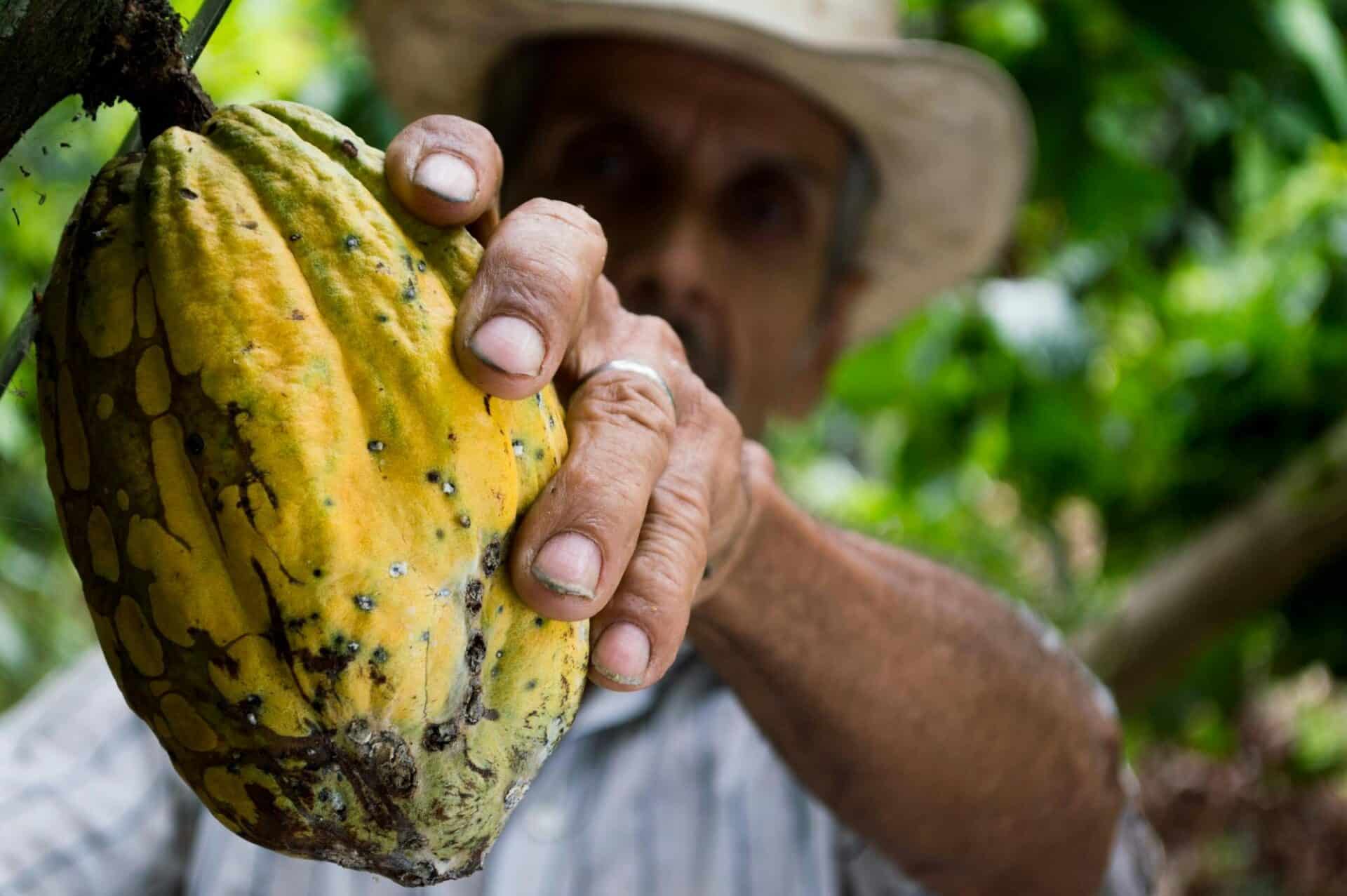The authors of the report titled “RETAIL SHOP PRICE INDEX” predict that record high cocoa prices on global markets will continue to rise and may exceed $7,000 per ton. Problems with supply and forecasted substantial harvest declines mean a third consecutive year of global commodity deficit. The key period for harvesting cocoa beans will end in March, with the next one commencing only in September. Although in January this year, sweets and desserts saw the most considerable price rise out of all product categories analyzed. Experts predict that the following price increases will affect cocoa-based cosmetics, medicines, and supplements. They add that food manufacturers, processing plants, confectioneries, and restaurants will feel the spike in prices. These losses will subsequently be passed on to consumers. This scenario could potentially unfold before Easter. Additionally, if the situation continues to deteriorate, it may also trigger shrinkflation.
Cocoa prices on global markets have reached an unprecedented high, not seen in many years. This constitutes a serious problem for producers, sellers, and consumers worldwide. On American commodity exchanges, a ton of cocoa now costs around $6,000. The situation seems a bit more tense on European exchanges, i.e., in the UK, the price of a ton of cocoa has now surpassed a level of £5,000.
– The unprecedented price rises are mainly the result of difficulties with cocoa supply from Côte d’Ivoire and Ghana, the world’s two largest producers. Forecasts for the 2023/2024 season predict significant harvest declines in these countries, meaning a global commodity deficit for the third year running. As I see it, prices will keep rising and could potentially halt at around $7,000 per ton as the situation is highly dynamic – explains Dr. Joanna Wieprow from the WSB Merito University in Wrocław.
According to the Center for Market Analysis UCE RESEARCH, the situation is so dynamic that it may not stop at $7,000. Too many problems have accumulated for the prices to start falling. If anything, they will decrease at a very slow pace. After all, cocoa has been getting more expensive for two years now. Furthermore, it’s hard to imagine an easy substitution for African supplies. It is worth noting that almost 75% of global cocoa bean harvests come from four countries – Ivory Coast, Ghana, Cameroon, and Nigeria – where these problems are most acute. Dr. Wieprow notes, “The cocoa tree is a demanding plant, susceptible to climate change, making cultivation challenging. The ongoing heat and drought, a result of the El Niño weather pattern, pose threats to the local plantations.”
The main cocoa harvesting period is from September to March. Dr. Justyna Rybacka from the WSB University Merito Gdynia comments, “These most recent harvests have been accompanied by very unfavourable weather conditions. The cocoa tree is a year-round plant, not a seasonal one. So if weather and climate conditions improve, allowing farmers to harvest more beans from April onwards, cocoa prices will ease a few months later, but this is not a guaranteed scenario.”
The cocoa tree diseases in Nigeria and Cameroon are exacerbating the shortage on global markets. As Dr. Joanna Wieprow warns, “The International Cocoa Organization predicts larger harvests in the coming years. However, the continuously growing demand for cocoa, especially in China, suggests that further price increases for chocolate and other sweets, but not exclusively, are inevitable.”
According to the “RETAIL SHOP PRICE INDEX” report, authored by UCE RESEARCH and WSB Merito Universities, sweets and desserts have seen the most substantial price increase from all 17 categories analyzed, increasing by over 14%. Chocolate bars, for example, saw a near 22% increase and wafers, over 16%.
“Rising cocoa prices may lead to further price increases for chocolate and other confectionery products, posing a challenge for consumers. It’s expected that increasing demand and production difficulties, due to climate change, will maintain the rising trend in cocoa prices,” warns the expert from WSB Merito University in Wrocław.
Meanwhile, Dr. Justyna Rybacka believes that food manufacturers, processing plants, and also confectioneries and restaurants will first feel the significant rise in cocoa prices. “Consequently, these entities will pass higher product costs onto the end consumer. There will be no other way. We will start experiencing these symptoms before Easter. Additionally, there’s a second phenomenon that may come into play, commonly known as shrinkflation, where package sizes decrease right before our eyes, or cheaper substitutes are used in the production process.” – analysts from UCE RESEARCH add.
The report’s authors also anticipate that high cocoa prices may impact other product categories. Cocoa is widely used in cosmetics due to its nutritional value, being the source of cocoa butter, among others. Hence, Dr. Justyna Rybacka concludes, “We may feel the price rises also in such product categories as cosmetics, medicines, or supplements based on cocoa.”
